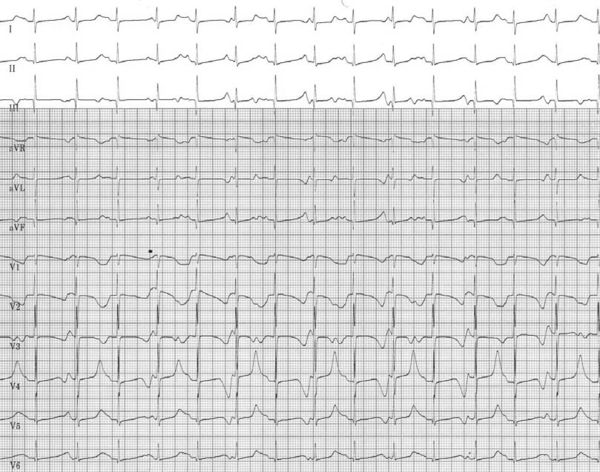Puzzle 2007 03 114 Answer: Difference between revisions
m New page: {{NHJ| |mainauthor= '''A.A.M. Wilde, N.A. Blom''' |edition= 2007:03,114 }} Figure 1|thumb A boy with a birth weight of 3.030 g was born by caesarean ... |
mNo edit summary |
||
| Line 35: | Line 35: | ||
The combination severe QT-interval prolongation | The combination severe QT-interval prolongation | ||
and syndactyly is classical for type 8 LQTS also referred | and syndactyly is classical for type 8 LQTS also referred | ||
to as Timothy syndrome. | to as Timothy syndrome.<cite>Splawski</cite> It presents frequently at birth | ||
with life-threatening polymorphic arrhythmias in the | with life-threatening polymorphic arrhythmias in the | ||
setting of severe QTc prolongation. Besides syndactyly | setting of severe QTc prolongation. Besides syndactyly | ||
Latest revision as of 05:47, 19 October 2008
| Author(s) | A.A.M. Wilde, N.A. Blom | |
| NHJ edition: | 2007:03,114 | |
| These Rhythm Puzzles have been published in the Netherlands Heart Journal and are reproduced here under the prevailing creative commons license with permission from the publisher, Bohn Stafleu Van Loghum. | ||
| The ECG can be enlarged twice by clicking on the image and it's first enlargement | ||

A boy with a birth weight of 3.030 g was born by caesarean section at 33 weeks of gestation because of bradycardia and severe foetal hydrops. Physical examination at birth showed a hydropic neonate with a heart rate of 70 beats/min. He had cutaneous syndactyly between the fourth and fifth fingers of the left hand. During the first week of life he suffered from polymorphic ventricular arrhythmias for which β- blocker treatment was started and an epicardial pacemaker (VVI) was implanted. An ECG a few weeks later is shown in the figure.
What is your diagnosis?
Answer
The 12-lead ECG shows sinus rhythm with a frequency of 98 beats/min. The PQ interval is 140 msec and the QRS width 60 msec (normal value for a neonate). The vertical axis is normal for the age. Repolarisation is grossly abnormal and clearly alternates in morphology every other beat. This T-wave alternans is visible in every lead but most clearly in lead V4. The QTc interval is severely prolonged and varies between 665 and 689 msec. The P wave fuses with the terminal part of the T wave and intermittently was not conducted (i.e. functional 2:1 block, not shown).
The combination severe QT-interval prolongation and syndactyly is classical for type 8 LQTS also referred to as Timothy syndrome.Splawski It presents frequently at birth with life-threatening polymorphic arrhythmias in the setting of severe QTc prolongation. Besides syndactyly (present in virtually all cases) extra cardiac features include congenital defects (ASD, VSD), hypoglycaemia, and autism. In 20% a hypertrophic cardiomyopathy is shown, as was also seen in our case on echocardiography. 2 Left ventricular systolic function was decreased (left ventricular shortening fraction 20%). DNA analysis in our case also revealed the de novo CaV1.2 missense mutation G406R.SplawskiLoANjoe
Postnatal course
After one month, he developed recurrent torsades de pointes and syncope. Mexiletine 15 mg/kg and oral potassium supplementation were added to the therapy and an extracardiac single-chamber implantable cardioverter- defibrillator (ICD) was inserted at 4 months of age. He received numerous ICD shocks and eventually died at the age of two years after cervical sympathectomy.
References
<biblio>
- Splawski pmid=15454078
- LoANjoe pmid=16360093
</biblio>